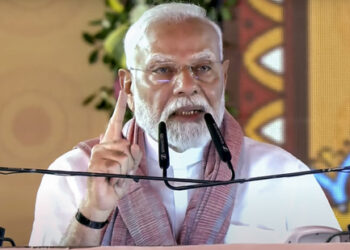The Union Cabinet, led by Prime Minister Narendra Modi, has officially approved the formation of the 8th Pay Commission. This decision is aimed at revising the salaries of over 49 lakh central government employees and the allowances for nearly 65 lakh pensioners.
Union Minister Ashwini Vaishnaw confirmed the decision, stating that the chairman and two members of the commission will soon be appointed. “Consultations will be conducted with central and state governments and other stakeholders to ensure the commission addresses key concerns,” he added.
Prime Minister Modi emphasized the broader impact of the decision, noting that it will not only enhance the quality of life for government employees but also stimulate consumption. “We are proud of the contributions of all government employees toward building a developed India. The Cabinet’s decision on the 8th Pay Commission will uplift lives and energize the economy,” he wrote on X (formerly Twitter).
What is a Pay Commission?
Pay commissions are constituted every decade to evaluate and revise the salary and pension structures of central government employees. Each commission is guided by specific terms of reference (ToR) to focus its recommendations.
The 7th Pay Commission, constituted in 2016, introduced significant changes, including:
- A fitment factor of 2.57, raising the minimum basic pay from ₹7,000 to ₹18,000 per month.
- Pension revisions, increasing the minimum pension to ₹9,000 and the maximum to ₹1,25,000 per month.
- Maximum salaries under the commission were capped at ₹2,50,000 per month.
The 8th Pay Commission, expected to be implemented post-2026, aims to build on these reforms to further benefit employees.
Who Does the Pay Commission Cover?
Central government employees paid from the consolidated fund of India fall under the pay commission’s ambit. However, employees of public sector undertakings (PSUs), autonomous bodies, and gramin dak sevaks are excluded, as they follow separate pay structures.
This landmark decision reflects the government’s commitment to improving the financial well-being of its workforce while driving economic growth.








 India
India











